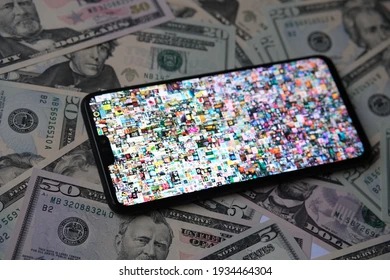“Bitcoin will do to banks what email did to the postal industry”.
Quite a thought-provoking statement, isn’t it?
When Bitcoin (The first cryptocurrency) was unleashed a decade back, no one could imagine the height of controversy that it would attract. Fast forward a decade later, the new Blockchain-powered cryptographic token is all set to take the thrill to a next level. In March 2021, an intriguing collage named “Everydays-The First 5000 Days” by Beepal was being sold for a whopping $69 Million. This unique artwork is created out of the images posted by Beepal since 2007.

Sold by Christie’s “Everydays” has become the first of its kind of purely digital NFT. More streamlined than earlier Blockchain products, there are myriad aspects that point towards the promising future for the NFTs. Let’s decode them:-
- Non-fungible tokens (NFTs) are cryptographic assets featuring metadata and unique identification codes that set them apart from each other. However, there comes an intriguing twist. They can neither be exchanged nor traded at equivalency like cryptocurrencies.NFTs cannot be imitated.
- NFTs cannot be imitated.
- Real-world items like Real-estate and artwork can be digitally represented by NFTs.
- It enables a better method of buying, selling and trading of real-world tangible assets thereby minimizing the probability of fraud, up to a great extent.
- NFTs can also be deployed for representing identities, property rights, peoples and beyond.

In a nutshell, NFTs are competent in connecting artists with the audiences without the presence of any intermediary thereby simplifying transactions like never before while creating new markets. For Sure, NFTs is in the nascent stage but since this stage itself, it has laid a foundation of a never-dying debate about the involvement of jaw-dropping money and the possibility of skewing an emerging market. What’s your take on it?


